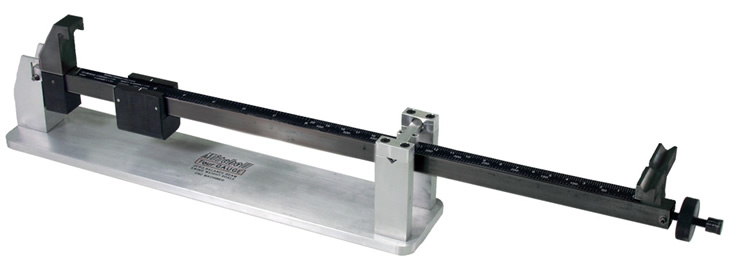Swingweight is something a lot of golfers have heard of but not many fully understand how it is calculated and the impact it can have on their games.
What is swingweight?
Swingweight is not an absolute measurement of weight but rather a representation of the relationship between the amount of weight in the bottom two thirds of a golf club compared to the top third of a golf club.
From a players perspective this translates to how the weight of the club "feels" during a players swing. If the club is too heavy the player will find it hard to swing and will tire during the round. Conversely a club that is too light will be harder to control and keep on the correct path throughout the swing.
In both cases an incorrect swingweight for an individuals swing and tempo will lead to increased off centre strikes and inconsistent results.
What factors impact swingweight?
The factors that impact the swingweight of a club are:
- The weight of the clubhead
- The weight of the grip
- The length of the club
- The weight of the shaft
It is important to remember that changing any of the factors listed above will change the swingweight and therefore the feel of the club.
An accepted rule of thumb is that increasing or decreasing the weight of the clubhead by 2 grams will increase or decrease the swingweight by 1 and the same impact would be achieved by adding or subtracting 5 grams to or from the grip and 9 grams to or from the shaft. Altering the length of the shaft by 1/2 an inch will move the swingweight +/- 3.
How is it measured?
Swingweight is measured using a specially designed swingweight scale invented by clubmaker Robert Adams in the early 1930's, which contains a fulcrum and a sliding weight.

The golf club is placed on top of the scale and the sliding counter weight adjusted until the club is in balance. The position of this sliding weight against the swingweight scale indicates the swingweight of the club.
The most popularly used swingweight scale is known as the 14 inch scale which indicates the distance of the fulcrum from the butt end of the club.
What do the values mean
The swingweight scale goes from A-F with ten increments marked 0 to 9 within each letter category hence swingweights such as C9 or D3.
The greater the letter and the number the heavier the swingweight. Therefore a swingweight of D2 is heavier than a swingweight of C8.
An average off the shelf men's golf club would have a swingweight of around D0 whilst the standard manufactured swingweight for ladies club is approximately C6.
Should all clubs have the same swingweight?
It is generally agreed that they should be. A matched swingweight throughout the set that matches the players swing and tempo should result in more consistent results.
However some club fitters think that there should be a slight change in swingweight throughout the set with the driver being the lightest club through to short irons of heavier swing weights.
In recent years a school of thought has arisen that matching the Moment of Inertia of each individual club in the set is more important than matching swingweight.
For further details on read my experience going through the MOI matching process for a driver and a set of irons.